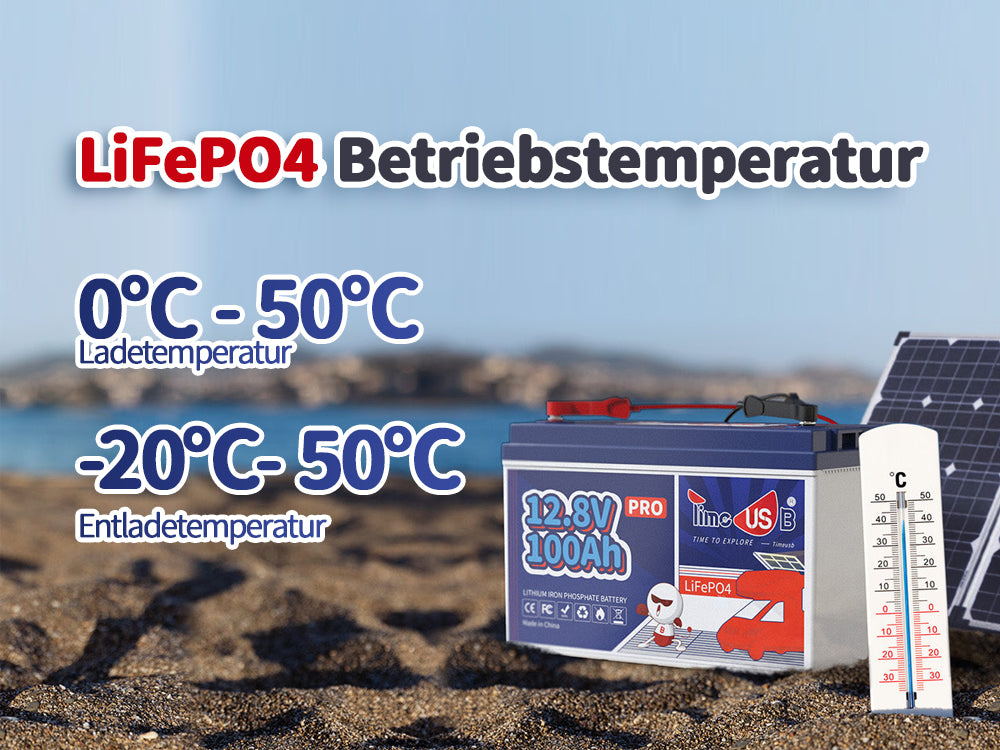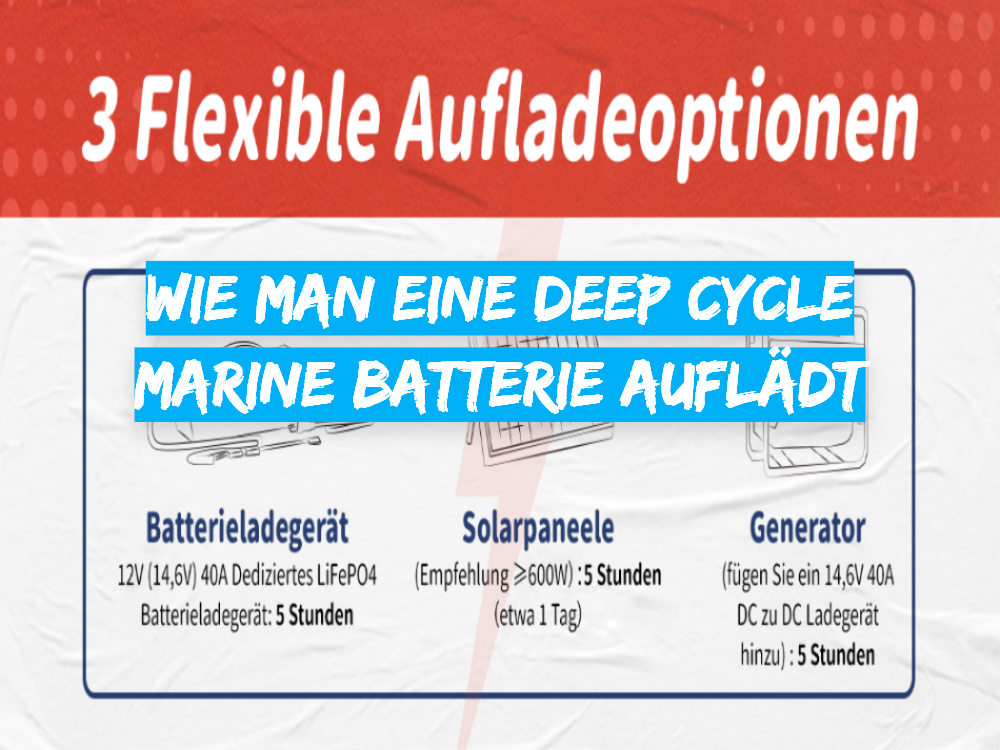LiFePO4 temperature range: discharge, charge and storage

In the field of energy storage, Lithium iron phosphate batteries (LiFePO4) have proven to be a popular choice due to their high energy density, long lifespan and improved safety features. A crucial aspect that significantly affects the performance and longevity of LiFePO4 batteries is their operating temperature range. Understanding the temperature limits within which these batteries operate optimally is critical to their effective use in various applications.
Basic information about the temperature range of LiFePO4 batteries
The temperature range describes the specific temperature limits within which a LiFePO4 battery functions optimally. Temperature has a significant influence on the electrochemical processes within the battery and therefore has a decisive influence on its performance and longevity. Therefore, a thorough understanding of the temperature range is crucial to take full advantage of the benefits of LiFePO4 batteries.
Operating temperature range of the LiFePO4 battery
The operating temperature range of LiFePO4 batteries is defined by two key parameters: charging temperature and discharging temperature. These parameters describe the specific conditions under which the batteries can be effectively charged and discharged to ensure optimal performance and safety.
|
Charging: 0℃ - 50℃ / 32℉ - 122℉ |
|
Discharge: -20℃ - 60℃ / -4℉ - 140℉ |
|
Storage: -10℃ - 50℃ / 14℉ - 122℉ |
Charging temperature
LiFePO4 batteries are ideally charged in a temperature range of 0 °C to 50 °C (32 °F to 122 °F). Operating within this range enables efficient charging and helps maintain the integrity of the battery, promoting longevity and reliable performance.
When discharging, LiFePO4 batteries are designed for a wider temperature range of -20°C to 60°C (-4°F to 140°F). This wide range allows the batteries to deliver power effectively under different environmental conditions, making them versatile for various applications.
Understanding and adhering to these specific operating temperature ranges is critical to the optimal performance of LiFePO4 batteries. Adhering to these temperature limits not only increases the performance and efficiency of the batteries, but also contributes to their overall safety and longevity.
Storage temperature range for LiFePO4 batteries
LiFePO4 batteries also have a defined storage temperature range, which is critical to maintaining their performance and health during periods of inactivity or non-use.
The recommended storage temperature for LiFePO4 batteries is in the range of -10°C to 50°C (14°F to 122°F). Storing batteries within this temperature range helps maintain their capacity and general condition, preventing degradation and preserving their ability to deliver power effectively when returned to service.
By adhering to the specified storage temperature limits, users can ensure that LiFePO4 batteries remain in optimal condition even during long-term storage. This allows for consistent performance and longevity, enabling reliable use of batteries when needed while minimizing the risk of damage from improper storage conditions.

Effects of low temperatures
At lower temperatures, the performance of LiFePO4 batteries can be significantly affected. Cold temperatures can lead to increased internal resistance, which in turn affects the battery's ability to deliver the required power. This could result in reduced capacity and voltage output, thus limiting the overall performance of the battery. Prolonged exposure to sub-zero temperatures can even cause irreversible damage that affects the lifespan of the battery.
Various strategies can be used to mitigate the effects of low temperatures. A common approach is to install battery heating systems, particularly in applications where the batteries are exposed to extreme cold. These heating systems help keep the batteries within their optimal operating temperature range, ensuring their performance and longevity. Timeusb features a 12V 140Ah battery with low temperature charging protection, helping you overcome the challenges of winter.
Effects of high temperatures
On the other hand, high temperatures can also pose a challenge for LiFePO4 batteries. Excessive heat can accelerate the aging process of the battery and shorten its overall lifespan. Additionally, high temperatures can lead to thermal runaway, a potentially dangerous condition in which the battery becomes increasingly vulnerable to overheating and possible damage.
Mitigation of high temperature effects
To counteract the effects of high temperatures, advanced battery management systems are often implemented. These systems are designed to monitor and control the temperature of the battery and ensure that it remains within the safe operating range. Additionally, incorporating efficient cooling mechanisms can help dissipate excess heat, protecting the battery from damage caused by prolonged exposure to high temperatures.
All Timeusb LiFePO4 batteries are equipped with a BMS to prevent overheating and thus ensure safety of use.

Precautions for the safe operation of LiFePO4 batteries
When operating LiFePO4 batteries, it is important to observe the following precautions to ensure both safety and optimal performance:
Temperature management
Observe the recommended charging, discharging and storage temperature ranges. Operating batteries within these specified temperatures helps maintain their performance and extend their lifespan while reducing the risk of thermal runaway or damage.
Overcharging and deep discharging
Avoid overcharging or deep discharging of LiFePO4 batteries. Implementing appropriate charge and discharge control mechanisms, such as using an appropriate battery management system (BMS), prevents these conditions, which can result in shortened battery life, reduced performance or, in extreme cases, safety risks.
Mechanical protection
Protect batteries from physical damage, including punctures, crushing or extreme shock and vibration, to prevent internal damage and ensure safe battery operation.
Avoiding exposure to water
Many batteries are IP65 waterproof, but cannot prevent damage when submerged in water. Avoid contact with water, moisture or extreme humidity as this can cause short circuits and compromise the integrity of the battery.
Proper ventilation
Provide adequate ventilation during charging and discharging to effectively dissipate heat and prevent the formation of potentially dangerous gases.
Quality components
Use high quality chargers and connectors designed for use with LiFePO4 batteries to ensure safe and efficient operation.
Monitoring
Regularly monitor battery health and performance to identify potential problems early and enable proactive maintenance and replacement when necessary.
Manufacturer guidelines
Follow the manufacturer's recommendations for use, maintenance and disposal procedures, including compliance with specific environmental regulations for disposal or recycling of batteries.
By adhering to these precautions, users can ensure the safe and efficient operation of LiFePO4 batteries, extending their service life and maintaining their performance while minimizing the risk of safety hazards.
Related articles: Mistakes to avoid when charging LiFePO4 lithium batteries
Conclusion
The operating temperature range of LiFePO4 batteries significantly influences their performance, longevity and safety. Understanding the effects of temperature extremes and implementing appropriate thermal management strategies are critical to unlocking the full potential of LiFePO4 batteries in a variety of applications.
By adhering to the recommended operating temperature range and using appropriate temperature regulation mechanisms, the efficiency and reliability of LiFePO4 batteries can be maximized and their seamless integration into various energy storage systems can be ensured.




